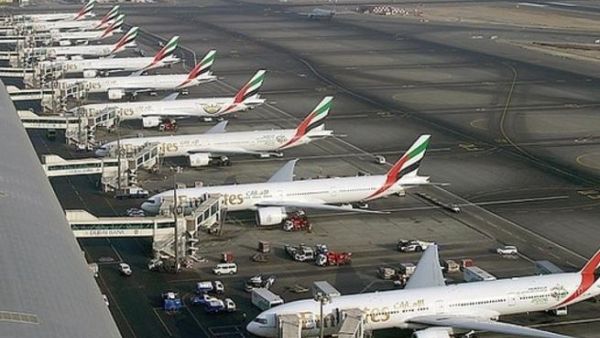According to The World Via Gulf, published for The Airport Show, which will take place from 6-8 May in Dubai, GCC airports are expected to handle as much as 250 million passengers by 2020, while Dubai is set to become the world’s busiest airport by 2015. It is also estimated that Middle East will have the third fastest passenger growth rate of 6.6 per cent by 2016.
The study shows that by 2025, seven billion people will be within reach via a single flight, while the total aircraft movement in the Middle East region will reach 2.3 million in 2025. ICAO expects the air traffic in the region to grow 5.2 per cent annually until 2030. Gearing up to meet the rise in passenger traffic, Middle East airlines will increase their capacity by 12.8 per cent in 2013. In addition, they are investing heavily in new aircraft, holding one-third of the global orders for Boeing 777 and Airbus A380.
As the study revealed, the aviation sector was fast to realize the potential that the GCC’s privileged location holds. With almost two billion people within 2.5 hours reach by air, the region has a unique geographical advantage that can fuel not only the sector, but the local economies in general: the aviation industry is projected to create an additional 294,000 jobs over the next 15 years. Middle East’s air transport industry contributed $129 billion to the region’s GDP, with the UAE alone accounting for AED145 billion. .
The 72-page report is based on information and statistics from various airports, airlines, and international organizations like ACI, IMF, IATA, ICAO and SITA, as well as the UAE’s General Civil Aviation Authority (GCAA) and Dubai Civil Aviation Authority (DCAA).
Middle East-based airlines currently account for eight per cent of the global air transport industry. The Middle East is home to the youngest fleet in the world, with a total of more than 600 aircraft, and has the greatest number of aircraft on order anywhere in the world. Indeed, between now and 2020, the Middle East is forecast to lead world passenger traffic growth, with current travel demand up 18 percent.
The Gulf carriers, including Emirates, Etihad and Qatar Airways, hold one-third of the global orders for Boeing 777 and Airbus A380. With a current fleet of 31 A380s and a further 59 on order, Emirates is the largest operator of this aircraft in the world. From 2002 to 2012, Emirates ordered 151 Boeing aircraft worth approximately $47 billion at current list prices.
As of 31 January 2013, Emirates still had on order 73 777 wide-body aircraft valued at $23 billion — six were 777 freighters and 67 of the largest 777, the -300ER. flydubai, Dubai-based low cost carrier, has ordered 50 737-800 narrow-body aircraft worth $4.45 billion at list price. Boeing has delivered 27, and 23 are still to be delivered, at a cost of $2 billion.
Etihad Airways, since its launch in 2003, has ordered 62 Boeings, 21 777s and 41 787s, and these were valued at $16.5 billion. Future deliveries comprise six 777s and the entire 787 order, worth a total of $10 billion.
The Middle East remains one of the world’s most-robust aviation regions and this is confirmed by a 200 per cent increase in inter-regional passenger traffic over the last 10 years.
The region is uniquely placed with more than 85 per cent of the world’s population within reach of a direct flight, making the Middle East a fertile market place for our eco-efficient aircraft, both today and beyond.
By 2020, Emirates, Qatar, and Etihad airlines will have the capacity to carry nearly 200 million passengers: four times their current capacity. By 2015, the Dubai, Doha, and Abu Dhabi airports will reach an annual capacity of 190 million passengers.
Passenger traffic in the GCC had grown at an annual rate of 10 percent between 2002 and 2010 – significantly higher than global traffic growth in the same period of between one and three percent.
According to General Civil Aviation Authority’s (GACA) Strategic Plan 2012-2016, the UAE airports are investing up to $50 billion in new and expanded projects over the next 15 years. The fleet of the UAE airlines is projected to be 425 in 2014, up from 95 aircraft in 2004.
The IACO expects air traffic in the Middle East to grow by 5.2 per cent annually until 2030. It goes without saying that the expected increase in the region’s travel volumes will add more pressure to ATMs already stretched beyond sustainability.
The Middle East airlines are expected to experience the highest growth in passenger traffic at 5.8 per cent per annum through to the year 2025, compared to the world average of 4.6 per cent.
The total aircraft movements to/from and within the Middle East region are estimated to increase to 2,346,000 in 2025 at an average annual growth rate of 7.6 per cent.
While aircraft movements in the UAE witnessed 6.7 per cent growth in 2012, there has been a 16.2 per cent growth in the fleet of UAE-registered airlines/operators in the past 10 years.








